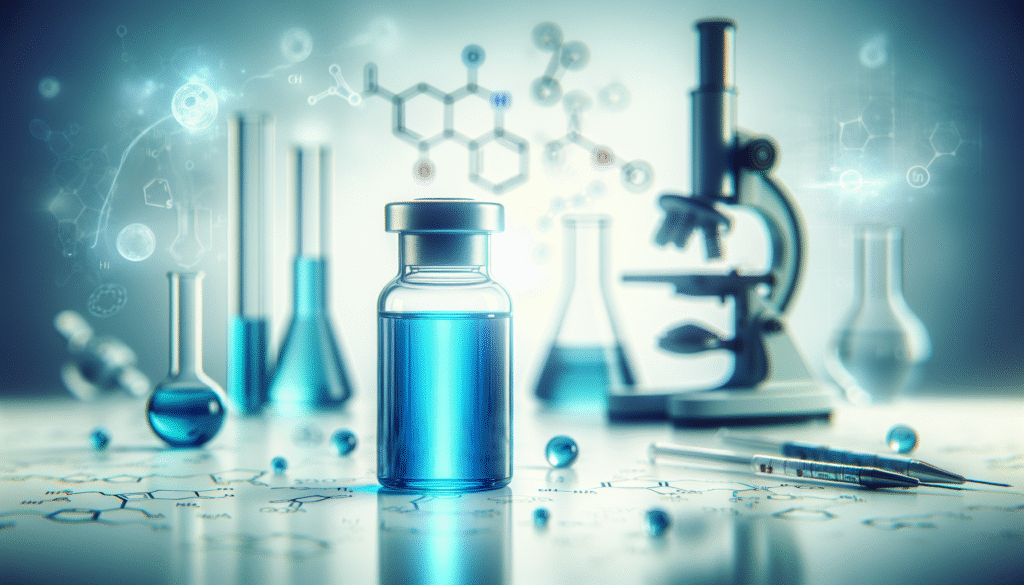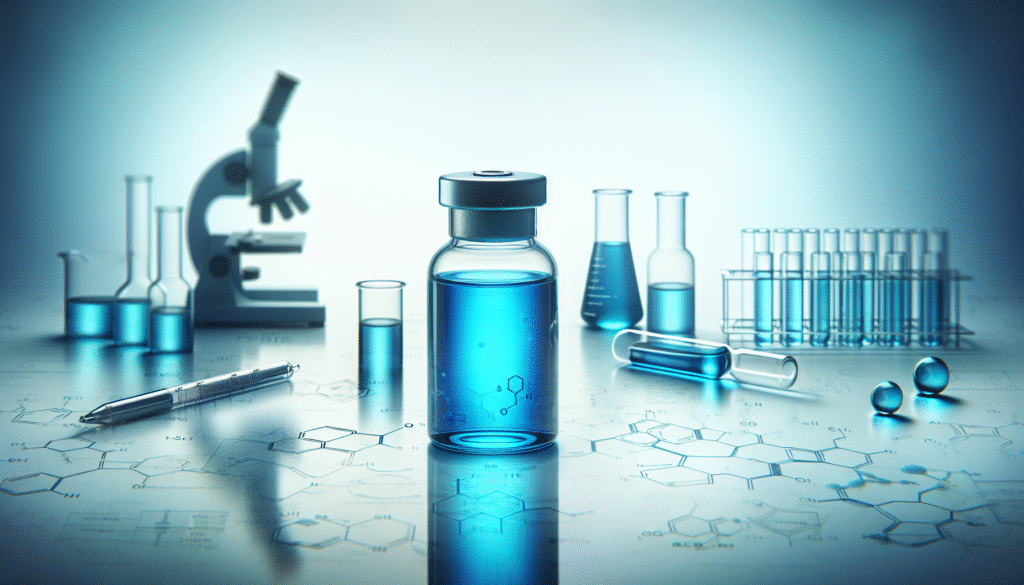
Have you ever wondered how a single compound can influence various biochemical pathways in the human body? Methylene blue, a compound historically known for its use as a dye and in medicine, is increasingly being recognized for its multifaceted mechanisms of action. Understanding these mechanisms can shed light on its therapeutic potential across multiple domains, including neurology, psychiatry, and infectious diseases.
Introduction to Methylene Blue
Methylene blue is not merely a dye; it is a complex agent with historical significance dating back to its initial synthesis in the 19th century. Originally developed for treating malaria, it has evolved into a subject of intense scientific research due to its wide-ranging biological effects.
This article will systematically explore the mechanisms by which methylene blue operates within the body, revealing its potential applications in modern medicine and research.
Chemical Properties of Methylene Blue
Methylene blue, or methylthioninium chloride, is characterized by its unique chemical structure. It is a thiazine dye with the molecular formula C16H18ClN3S.
Solubility and Stability
Methylene blue is water-soluble, which makes it easy to administer in various forms—oral, intravenous, or topical. Its stability in solution allows for precise dosing in clinical settings. Moreover, its relatively low toxicity profile enhances its appeal for therapeutic use.
Absorption and Distribution
When introduced into the body, methylene blue is absorbed primarily through the gastrointestinal tract. After absorption, it is distributed widely, with notable accumulation in organs such as the liver, kidneys, and brain. This distribution pattern plays a role in its effects, particularly in neuroprotective contexts.

Immunomodulatory Effects
Methylene blue exerts immunological effects that can modulate the body’s response to pathogens. Understanding its role in immunity can illuminate new treatment pathways.
Alteration of Cytokine Production
Research indicates that methylene blue influences the production of cytokines—molecules crucial for cell signaling in immune responses. By modulating cytokine secretion, methylene blue can either enhance or inhibit inflammatory responses, making it a candidate for treating inflammatory conditions.
Role in Reactive Oxygen Species
Methylene blue acts as an antioxidant, scavenging reactive oxygen species (ROS) that could otherwise lead to cellular damage. By mitigating oxidative stress, it reduces the likelihood of chronic diseases associated with inflammation and damage to DNA, proteins, and lipids.
Neuroprotective Mechanisms
In recent years, methylene blue has emerged as a promising candidate for neuroprotection. Its mechanisms of action in the brain can offer insights into potential treatments for neurodegenerative disorders.
Mitochondrial Function Enhancement
One of the principal mechanisms of methylene blue is its ability to enhance mitochondrial function. It acts by improving the efficiency of the electron transport chain, thereby facilitating ATP production. Enhanced ATP synthesis supports optimal neuronal function and survival.
Neurotransmitter Modulation
Methylene blue has been shown to influence neurotransmitter systems, including serotonin and dopamine pathways. By modulating these neurotransmitters, it has potential applications in treating mood disorders, such as depression and anxiety.
Improvement of Cerebral Blood Flow
Studies suggest that methylene blue may improve cerebral blood flow through vasodilation. This increase in blood flow can enhance nutrient delivery and waste removal in the brain, supporting overall cognitive function.

Antimicrobial Properties
Methylene blue’s antimicrobial properties are well-documented and contribute to its therapeutic applications, especially in treating infections.
Mechanism of Action Against Pathogens
Methylene blue exhibits antimicrobial activity against a range of bacteria, viruses, and fungi. Its mechanism includes the generation of ROS upon exposure to light, which can damage cellular structures and lead to microbial cell death.
Clinical Applications in Infectious Diseases
The compound has been investigated for treating conditions like urinary tract infections (UTIs) and malaria, demonstrating effectiveness in reducing pathogen load and improving clinical outcomes. Its use in combination therapies may enhance efficacy and minimize resistance development.
Photodynamic Therapy
The use of methylene blue in photodynamic therapy (PDT) represents an innovative approach to treating certain cancers and infections. Understanding the principles of PDT can elucidate methylene blue’s versatility.
Mechanisms and Applications of PDT
Photodynamic therapy involves activating a photosensitizer, such as methylene blue, with light to produce localized oxidative damage in tissues. This targeted approach minimizes damage to surrounding healthy cells.
Current Research and Efficacy
Ongoing studies highlight the potential of methylene blue in treating cutaneous and subcutaneous tumors, as well as certain types of bacterial infections resistant to conventional therapies. The efficacy and safety profiles of PDT continue to be evaluated through clinical trials.
Potential Risks and Toxicity
While methylene blue has demonstrated many benefits, it also carries potential risks. Understanding these is essential for safe application in clinical settings.
Side Effects and Contraindications
Possible side effects include gastrointestinal disturbances, headache, and allergic reactions. Caution is advised in patients with G6PD deficiency due to the potential risk of hemolysis. Proper screening and monitoring are essential to mitigate these risks.
Drug Interactions
Methylene blue can interact with various medications, particularly those affecting serotonin levels, leading to possible serotonin syndrome. Awareness of these interactions is crucial in a clinical context to ensure patient safety.
Future Directions and Research
The extensive research surrounding methylene blue has opened new avenues for its use in various medical fields. Future studies are essential to solidify its applications and understand the full range of mechanisms influencing its action.
Investigating New Therapeutic Applications
Ongoing research is focused on exploring methylene blue’s potential in treating conditions such as Alzheimer’s disease, mood disorders, and chronic pain. By uncovering new therapeutic benefits, the compound may play a significant role in modern medicine.
Advancements in Delivery Methods
Innovations in drug delivery methods could enhance the efficacy of methylene blue. Nanoparticle formulations, liposomal encapsulation, or transdermal patches could improve bioavailability and specificity, leading to better clinical outcomes.
Conclusion
The mechanisms of action of methylene blue reveal a compound rich in potential applications in modern medicine. From its effects on mitochondrial function and neurotransmitter modulation to its antimicrobial properties, methylene blue’s complexity matches its promise.
As research continues to unfold, the insights gained may offer revolutionary impacts on how we approach treatment for a variety of conditions. By understanding how this compound operates at a molecular level, you can appreciate the intricate balance of biochemistry in promoting health and treating disease.
In conclusion, the journey of methylene blue from a simple dye to a multifaceted therapeutic agent exemplifies the interconnectedness of chemistry and biology. As you explore the implications of such agents, consider their role in shaping future medical paradigms and enhancing therapeutic outcomes.